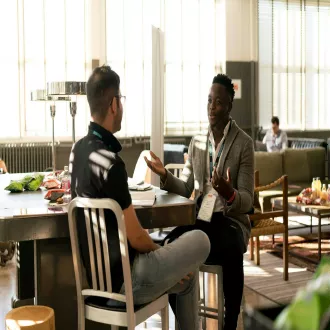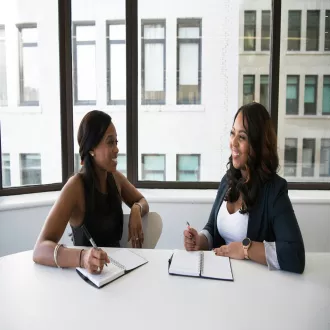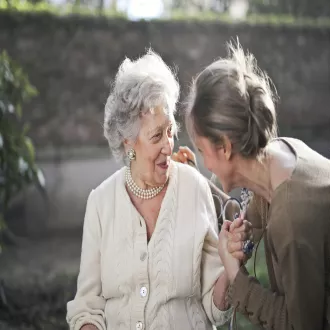Transcription Postures of Confidence and Charisma
Adopting appropriate body postures is fundamental to project confidence, authority and charisma.
An assertive posture is characterized by a straight back and shoulders slightly back, a position that exudes confidence.
These postures not only influence how others see us, but also how we feel, demonstrating a direct link between the body and emotional state.
Scientific studies have shown that adopting certain power postures can increase our confidence levels and reduce stress.
Power postures and their psychological effect
Amy Cuddy's experiment, which measured levels of cortisol (the stress hormone) and testosterone (linked to confidence), showed that power postures, such as putting your feet up on a desk or raising your arms in victory, increase testosterone and decrease cortisol.
These physiological changes make us feel more confident and less stressed.
While it is not practical to adopt these postures in a meeting, we can use them in private before an important event, such as an interview or presentation, to intentionally increase our confidence and charisma.
Gestures and movements that project confidence
In addition to posture, the way we move and gesture also communicates confidence.
A brisk, purposeful gait, head up, and arms relaxed along the body are signs of determination and confidence.
Avoiding walking with hands in pockets or with a hunched posture, which can project a lack of direction, is crucial to making a good impression.
On the other hand, gestures such as putting your hands on your hips and keeping your feet shoulder-width apart demonstrate that you are ready to act and that you are occupying your space with confidence.
The importance of an open physiology
An open physiology is essential to project honesty, confidence and approachability.
Avoiding physical barriers, such as hiding behind a lectern or monitor, or keeping arms crossed, encourages dialogue and makes others feel more comfortable with us.
People with an open posture and relaxed gestures, who lean toward the speaker and maintain eye contact, convey genuine interest in the conversation.
Occupying our space in a natural way, without invading that of others, demonstrates security and self-confidence.
This type of body language not only helps m
postures of confidence and charisma






